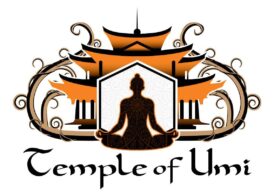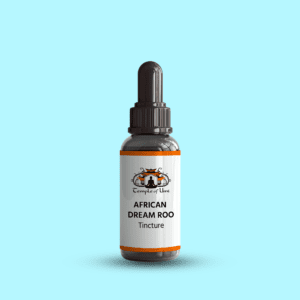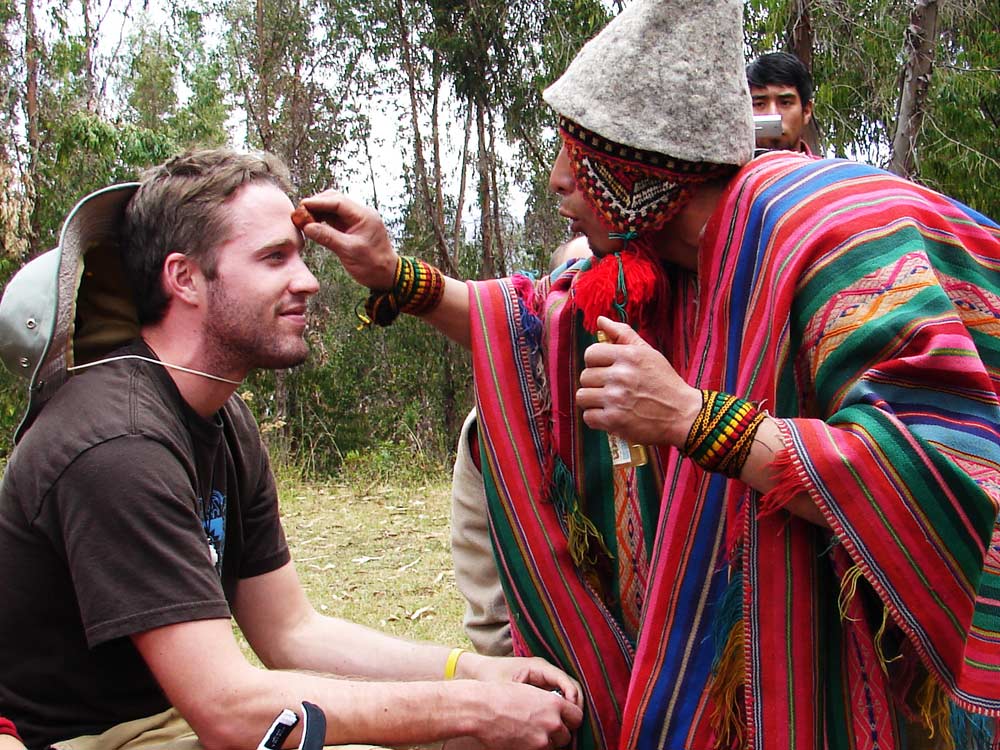Breath awareness meditation

By Temple of Umi

Table of Contents
Discover the essence of breath awareness meditation: an accessible path to mindfulness, stress reduction, and emotional balance. Dive into the key benefits and why it’s a cornerstone of mental and physical health.
Introduction
What is Breath Awareness Meditation?
Breath Awareness Meditation is a mindfulness practice focusing on the natural rhythm and flow of one’s breathing. This technique encourages practitioners to observe their breath without trying to change it, helping to anchor the mind in the present moment. By directing attention to the breath, participants can cultivate a state of calmness, reducing stress and enhancing overall mental clarity.
The Historical Roots of Breath Awareness Meditation
Breath Awareness Meditation originates in ancient traditions, with roots stretching back thousands of years. It is a fundamental practice within Buddhism and Hinduism, often used to prepare the mind for more profound meditation and enlightenment. Historically, this practice has been a bridge to greater self-awareness and understanding, emphasizing the connection between the mind, body, and spirit.
The Science Behind Breath Awareness: Why It Works
Recent scientific studies have illuminated the mechanisms through which Breath Awareness Meditation exerts its effects. Focusing on the breath activates the parasympathetic nervous system, which helps to counteract the body’s stress response. This can lead to decreased heart rate, lowered blood pressure, and a state of relaxation. Furthermore, engaging in this practice regularly has been shown to improve attention, reduce symptoms of anxiety and depression, and enhance overall emotional wellbeing. Learn more.
Understanding the Basics
The Core Principles of Breath Awareness Meditation
Breath Awareness Meditation is grounded in simplicity and accessibility. Its core principles include:
- Mindfulness: Remaining fully present and engaged with the experience of breathing.
- Non-judgment: Observing the breath without critique or the desire to alter it.
- Patience: Allowing the practice to unfold naturally without rushing or forcing the experience.
- Consistency: Practicing regularly to deepen awareness and cultivate mental tranquility.
Breath Awareness vs. Other Meditation Techniques: What Sets It Apart?
While there are many forms of meditation, Breath Awareness Meditation is distinguished by its focus and simplicity:
- Focus on the Present: Unlike techniques that involve visualization or mantra repetition, breath awareness keeps the practitioner rooted in the current moment.
- Accessibility: This practice does not require special tools, making it accessible anywhere.
- Adaptability: It can be a standalone practice or incorporated into other meditation techniques to deepen the meditative state.
- Evidence-Based Benefits: A growing body of scientific research supports the specific benefits of breath-focused practices, distinguishing them from broader meditation practices.

Getting Started with Breath Awareness Meditation
Preparing Your Space and Mind for Meditation Embarking on the journey of breath awareness meditation requires a serene space and a receptive state of mind. Here’s how to set the stage for a fulfilling practice:
- Find a Quiet Corner: Choose a spot where interruptions are least likely. It doesn’t have to be large, just peaceful.
- Comfort is Key: Opt for a comfortable seat on a cushion or chair where your back can be straight yet relaxed.
- Minimize Distractions: Turn off digital devices or set them to “Do Not Disturb” mode to ensure your session remains uninterrupted.
- Set an Intention: Before beginning, silently set your intention for the meditation. This could be as simple as seeking calm or clarity.
A Step-by-Step Guide to Your First Breath Awareness Session
- Start with a Gentle Stretch: Begin with some light stretching to release physical tension and facilitate easier breathing.
- Adopt a Comfortable Posture: Sit with your back straight, hands on your lap, and eyes gently closed.
- Focus on Your Breath: Turn your attention to your breath. Notice the sensation of air entering and exiting your nostrils.
- Count Your Breaths: Initially, keep your focus by counting breaths. Count “one” for an inhale and “two” for an exhale, up to ten, then start over.
- Return When Wandered: Your mind will wander. When you notice this, gently bring your attention back to your breath without judgment.
- Close with Gratitude: Slowly open your eyes after 5-10 minutes or your preferred duration. Take a moment to feel grateful for taking this time for yourself.
Techniques and Tips for Enhanced Practice
Deepening Your Meditation: Techniques for Advanced Practitioners Advanced practitioners can enhance their breath awareness meditation through several techniques:
- Lengthen the Breath: Gradually extend the length of each inhale and exhale, focusing on the smooth transition between breaths.
- Incorporate Pauses: Add a pause after each inhale and exhale, observing the stillness between breaths.
- Visualize the Breath: Imagine your breath moving through your body, visualizing peace and calm with each cycle.
Common Challenges in Breath Awareness Meditation and How to Overcome Them
- Restlessness: It’s normal. When you feel restless, acknowledge it and gently return your focus to your breath.
- Distracting Thoughts: Instead of fighting thoughts, observe them as clouds passing in the sky, then refocus on your breathing.
- Difficulty Focusing: Use guided meditations or soft background music to help maintain focus, gradually reducing reliance as you become more practiced.
Integrating Breath Awareness into Your Daily Routine
- Morning Ritual: Start your day with a brief session to set a calm, centered tone for the day ahead.
- Break-time Breathing: Take short breath awareness breaks throughout the day to reset and refresh your mind.
- Evening Wind-Down: Conclude your day with meditation to promote restful sleep and reflection.
The Benefits of Breath Awareness Meditation
Breath awareness meditation, a cornerstone of mindfulness practices, stands out for its simplicity and profound impact on practitioners’ lives. Delving into its benefits offers a glimpse into the transformative power of this ancient technique, revitalizing both mind and body.
Physical and Mental Health Benefits: From Stress Relief to Improved Focus
- Stress Reduction: Regular breath awareness meditation activates the body’s relaxation response, mitigating the physical and emotional symptoms of stress. It lowers cortisol levels, reducing anxiety and promoting a state of calm.
- Enhanced Focus and Concentration: By anchoring the mind to the rhythm of your breath, this form of meditation enhances the ability to concentrate. Over time, practitioners often report improved attention spans and sharper focus in daily tasks.
- Boosted Immune System: Studies suggest that meditation can bolster the immune system, making the body more resilient against illness by reducing stress and promoting healthier lifestyle choices.
- Improved Sleep: Breath awareness techniques can improve sleep patterns by soothing the mind and reducing sleep-disrupting anxiety. This leads to more restorative sleep and less insomnia.
- Emotional Balance: Breath awareness meditation can help practitioners navigate emotions more effectively by fostering an increased awareness of the present moment, leading to extraordinary patience, tolerance, and a sense of inner peace.
Personal Stories of Transformation: How Breath Awareness Changed Lives
- Emma’s Journey: After years of battling anxiety, Emma found solace in breath awareness meditation. She shares how dedicating 20 minutes daily to this practice restored her sense of calm and significantly reduced her anxiety levels.
- John’s Transformation: John, a corporate executive, credits breath awareness meditation with sharpening his focus and decision-making skills, transforming his approach to work and leadership.
- Maria’s Path to Healing: Recovering from a severe illness, Maria integrated breath awareness meditation into her rehabilitation process. Her story highlights the role of meditation in her physical healing and emotional resilience. Learn more.
Tools and Resources
For those inspired to embark on or deepen their journey in breath awareness meditation, numerous resources are available to guide the way.
Recommended Apps and Websites for Guided Breath Awareness Meditation
- Headspace: Offers a variety of guided meditations focusing on breath awareness, suitable for both beginners and advanced practitioners.
- Calm: Features a wide range of meditation sessions, including specific tracks for breath awareness that aim to reduce stress and improve sleep.
- Insight Timer: A free app with thousands of guided meditations, including many focused on breath awareness. It also offers the community support of millions of meditators.
Books and Articles for Further Reading
- Wherever You Go, There You Are by Jon Kabat-Zinn: This book offers insight into mindfulness meditation and includes practical guidance on incorporating breath awareness into daily life.
- The Miracle of Mindfulness by Thich Nhat Hanh is a classic text on mindfulness. It provides simple yet profound instructions on the practice of breath awareness.
- The Science of Breath: This article explores the physiological and psychological effects of breath-focused meditation and offers a scientific perspective on its benefits.
Embarking on the journey of breath awareness meditation opens a path to greater wellbeing, offering tools to navigate life’s challenges with grace and resilience. The stories of transformation and the wealth of resources available underscore the accessible and life-changing nature of this practice.

Final words
Recap: The Key Takeaways on Breath Awareness Meditation
Breath awareness meditation, an ancient yet timeless practice, is a powerful tool for nurturing mental, physical, and emotional wellbeing. At its core, this form of meditation invites us to turn our attention inward, focusing on the natural rhythm of our breath to cultivate a state of deep relaxation and mindfulness. Consistent practice teaches us to observe our thoughts and emotions without judgment, fostering a sense of inner peace and clarity. Key takeaways include:
- Simplicity and Accessibility: Unlike some meditation practices requiring specific postures or equipment, breath awareness meditation can be practiced anywhere, making it incredibly accessible.
- Enhanced Mindfulness: Regular practice sharpens our ability to live in the present moment, enhancing our mindfulness in daily activities beyond the meditation cushion.
- Stress Reduction: This meditation activates the body’s relaxation response, significantly reducing stress and anxiety levels and contributing to overall mental health.
- Improved Physical Health: Studies suggest breath awareness can improve respiratory function, lower blood pressure, and enhance overall physical health.
- Emotional Balance: Engaging in this practice can lead to greater emotional resilience, allowing practitioners to manage their reactions to life’s ups and downs with equanimity.
Continuing Your Journey in Breath Awareness Practice
As you integrate breath awareness meditation into your life, remember that the journey is as significant as the destination. Here are some suggestions to enrich your practice:
- Set Regular Practice Times: Consistency is critical. Aim to meditate at the same time daily to establish a steady routine.
- Create a Dedicated Space: Dedicate a quiet, comfortable space for meditation. A serene environment can enhance your practice.
- Explore Further: While maintaining the essence of breath awareness, feel free to explore variations in technique to find what best suits your needs.
- Join a Community: Connecting with a community of practitioners can provide support and motivation and deepen your understanding of meditation.
- Reflect and Journal: After each session, spend a few minutes reflecting on your experience. Journaling can offer insights into your practice and personal growth.
Breath awareness meditation is a journey of self-discovery and inner transformation. As you continue to explore this profound practice, the benefits extend far beyond the meditation session, enriching every aspect of your life with greater mindfulness, peace, and wellbeing. Keep exploring, practicing, and embracing the journey with an open heart and mind.
- Sacred Plant Medicine Retreats in Georgia
- 5 Ayahuasca Retreats in California Worth Exploring
- 7 Best Aya Retreats in America. Click here.
- Mcdonough Ayahuasca retreat
- Conley Ayahuasca retreat
- Whitesburg Ayahuasca retreat
- Brooks Ayahuasca retreat
- Gay Ayahuasca retreat
- Williamson Ayahuasca retreat
- Orchard Hill Ayahuasca retreat
- Glenn Ayahuasca retreat
- Luthersville Ayahuasca retreat
- Shady Dale Ayahuasca retreat
- Bowdon Junction Ayahuasca retreat
- Sargent Ayahuasca retreat
- Greenville Ayahuasca retreat
- Lovejoy Ayahuasca retreat
- Winston Ayahuasca retreat
- Rutledge Ayahuasca retreat
- Moreland Ayahuasca retreat
- Molena Ayahuasca retreat
- Lebanon Ayahuasca retreat
- Good Hope Ayahuasca retreat
- Haralson Ayahuasca retreat
- An Inclusive List of Psychedelic Quotes
- Mount Ayahuasca retreat
- Grantville Ayahuasca retreat
- Pine Lake Retreat near
- Rydal Ayahuasca retreat
- Porterdale Ayahuasca retreat
- Waco Ayahuasca retreat
- Temple Ayahuasca retreat
- Bethlehem Ayahuasca retreat
- Jenkinsburg Ayahuasca retreat
- Adairsville Ayahuasca retreat
- Red Oak Ayahuasca retreat
- Woodbury Ayahuasca retreat
- Cassville Ayahuasca retreat
- Redan Ayahuasca retreat
- North Decatur Ayahuasca retreat
- Grantville Ayahuasca retreat
- Hillsboro Ayahuasca retreat
- Jackson Ayahuasca retreat
- Braselton Ayahuasca retreat
- Zebulon Ayahuasca retreat
- Flovilla Ayahuasca retreat
- Auburn Ayahuasca retreat
- Warm Springs Ayahuasca retreat
- Scottdale Ayahuasca retreat
- Lithia Springs Ayahuasca retreat
- Villa Rica Ayahuasca retreat
- Grayson Ayahuasca retreat
- Sunny Side Ayahuasca retreat
- Senoia Ayahuasca retreat
- Locust Grove Ayahuasca retreat
- Chamblee Ayahuasca retreat
- Fairburn Ayahuasca retreat
- Snellville Ayahuasca retreat
- Monticello Ayahuasca retreat
- Union City Ayahuasca retreat
- Tallapoosa Ayahuasca retreat
- Bremen Ayahuasca retreat
- Hampton Ayahuasca retreat
- Monroe Ayahuasca retreat
- Marble Hill Ayahuasca retreat
- Madison Ayahuasca retreat
- Dawsonville Ayahuasca retreat
- Felton Ayahuasca retreat
- Concord Ayahuasca retreat
- Mansfield Ayahuasca retreat
- Taylorsville Ayahuasca retreat
- Roopville Ayahuasca retreat
- Turin Ayahuasca retreat
- Franklin Ayahuasca retreat
- Clarkdale Ayahuasca retreat
- Talking Rock Ayahuasca retreat
- Jersey Ayahuasca retreat
- Kingston Ayahuasca retreat
- Bostwick Ayahuasca retreat
- North Metro Ayahuasca retreat
- Meansville Ayahuasca retreat
- Social Circle Ayahuasca retreat
- White Ayahuasca retreat
- Rhode Island Ayahuasca retreat
- Maryland Ayahuasca retreat
- Delaware Ayahuasca retreat
- New Jersey Ayahuasca retreat
- Connecticut Ayahuasca retreat
- Massachusetts Ayahuasca retreat
- Hampshire Ayahuasca retreat
- Pennsylvania Ayahuasca retreat
- New York Ayahuasca retreat
- Florida Ayahuasca retreat
- South Carolina Ayahuasca Retreat
- North Carolina Ayahuasca Retreat
- West West Virginia Ayahuasca retreat
- Virginia Ayahuasca retreat
- Ohio Ayahuasca retreat
- Alabama Ayahuasca retreat
- Mississippi Ayahuasca retreat
- Tennessee Ayahuasca retreat
- Kentucky Ayahuasca retreat
- IndianaAyahuasca retreat
- ILLINOIS Ayahuasca retreat
- Missouri Ayahuasca retreat
- Arkansas Ayahuasca retreat
- Louisiana Ayahuasca retreat
- Texas Ayahuasca retreat
- Oklahoma Ayahuasca retreat
- KansasAyahuasca retreat
- Ayahuasca retreats near me in Experiment.
- A wellness retreat in Georgia
- What is Ayahuasca?
- Embark on a Journey of Transformation with Spiritual Healing
- Unveiling Healing Energy at the Temple of Umi
- 10 Energy Healing Techniques to Transform Your Life
- Where to get Ayahuasca in the USA
- Top Ayahuasca retreats in the USA. Learn more.
- Cost of Ayahuasca Retreat: Balancing Cost and Experience. Learn more.
- What is trauma bonding?
- A Journey into the Healing Properties of Psychedelic Mushrooms. Learn more.
- Ayahuasca Retreat Georgia – Experience Spiritual Awakening
- Spiritual Retreats Georgia
- Shaman in America Exploration
- Shamanism – Shamanic healing
- Shaman Healing Guide
- Ayahuasca ceremonies Ayahuasca ceremonies near you in the USA
- Ayahuasca Experience
- DMT Journey, Benefits, and Side Effects
- Iowaska – What is it?
- Plant medicine retreats in Georgia
- Why massage is beneficial, according to a cardiologist.
- Are mushrooms truffles – What Is a Truffle?
- 11 Best Ayahuasca Retreats in the USA for Spiritual Healing
- What is Rapé?
- What is a Tincture?
- Where to find Ayahuasca near me
- Healing retreats USA
- Best Retreats USA








